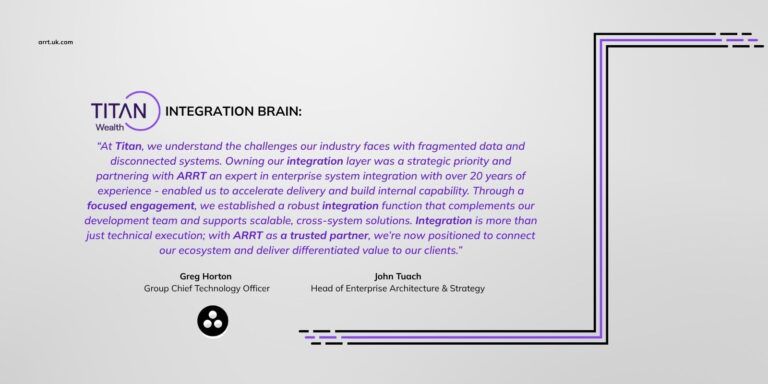Introduction: Beyond the Buzzword
Digital transformation is a phrase that dominates executive meetings, vendor pitches, and keynote stages. It promises modernisation, agility, and innovation. But for those of us who live inside transformation programmes as integration engineers, the view is different. We see the moving parts, the fragile connections, and the often-underestimated work that makes the vision possible.
From our perspective, transformation is not just about sleek new applications or customer-facing portals. It is about stitching together ecosystems of legacy platforms, modern cloud services, regulatory constraints, and human processes. Without strong integration, transformation collapses under its own complexity.
The Moving Parts: An Engineer’s Reality
In an enterprise environment, no system exists in isolation. A new SaaS solution for HR is useless if it cannot talk to payroll. A digital banking app has little value if it cannot securely connect to decades-old core systems. An AI-powered customer service chatbot is ineffective if it cannot access the right data at the right time.
These moving parts form an ecosystem that is constantly changing. Integration engineers have to balance:
- Legacy estates, often running BizTalk or other middleware with years of undocumented customisations
- Modern cloud services and SaaS platforms that promise speed but introduce new dependencies
- Regulatory and compliance frameworks, such as DORA, that require transparency and resilience
- Business units with urgent priorities and executives looking for rapid results
The complexity is not just technical. It is organisational and operational. And it is the integration layer that has to absorb that complexity and make it appear simple.
The Integration Engineer’s Approach
From the outside, transformation is sometimes viewed as a big-bang launch. From the inside, integration engineering is about methodical enablement.
The work begins with discovery and mapping. Every integration point has to be surfaced and understood. Dependencies are often hidden, single points of failure are common, and tribal knowledge can disappear when people leave. We frequently uncover hundreds of undocumented connections during this stage.
The next step is standardisation. Spaghetti architecture, where point-to-point connections multiply unchecked, is a silent killer of transformation projects. Moving towards API-led integration, event-driven architectures, and services such as Azure API Management and Service Bus provides structure and control.
Integration engineers also embed resilience and compliance by design. It is no longer acceptable to tack on security or compliance at the end of a project. Regulators and auditors now expect clear evidence of operational resilience. By adopting patterns supported by Azure Landing Zones and Logic Apps, we can ensure that governance, monitoring, and failover are engineered into the ecosystem from the start.
Finally, integration is delivered in incremental layers. Each wave of work adds value and sets the stage for the next. This approach avoids long programmes that deliver nothing until the very end. It also provides the agility to respond when requirements inevitably change.
Roadblocks: The Realities We Face
Even with the right approach, transformation is rarely smooth. Integration engineers repeatedly face a familiar set of roadblocks.
Underestimation of integration is perhaps the most common. Business leaders often see integration as a minor step at the end of delivery. In practice, it is usually the single most complex element. In one transformation, a global insurer procured a new SaaS policy system but only allocated a few weeks for integration. Once the project began, it became clear that over 20 legacy systems needed to be connected, each with unique quirks. We had to step in and design an event-driven integration layer with Logic Apps and Service Bus to untangle the mess and make the SaaS platform viable.
Configuration chaos is another recurring issue. Poorly managed configuration data undermines even well-architected systems. In one financial services engagement, undocumented configurations caused repeated outages during testing. Rationalising and governing configuration data became as important as the integrations themselves, and once addressed, the project moved forward with far fewer risks.
Legacy constraints create their own challenges. In a large-scale BizTalk-to-Azure migration, the estate had grown so customised that no one truly understood its dependencies. The discovery exercise alone took months. By carefully mapping and modernising into Azure Integration Services, we were able to create a more transparent, resilient architecture, but only through meticulous engineering.
Siloed decision-making also hampers transformation. In one case, a department procured a cloud platform without consulting central IT. It worked locally but created integration headaches for enterprise-wide reporting and compliance. By implementing APIs through API Management, we restored control and avoided creating yet another shadow IT island.
Finally, compressed timelines remain a universal obstacle. Transformation is often sold with bold promises. Yet integration complexity only becomes visible mid-project, when it is too late to adjust expectations. Engineers are then tasked with finding solutions that balance realism with urgency, often relying on incremental releases to deliver progress without sacrificing quality.
The Wins: When Integration Just Works
The irony of integration engineering is that success is invisible. When data flows seamlessly, when systems synchronise without error, when new digital services launch without disrupting the old ones, nobody stops to ask how it happened.
But those wins are significant. In the BizTalk-to-Azure migration mentioned earlier, the move not only modernised the architecture but also reduced operating costs and made audits smoother. In the insurer’s SaaS project, near real-time data synchronisation transformed reporting and customer response times. In the wealth management transformation, building resilience into the integration layer ensured that compliance checks were passed without last-minute firefighting.
Integration wins may not always make headlines, but they are the foundation on which transformation rests.
The Evolution of Integration in Transformation
The role of the integration engineer has evolved dramatically. We are no longer just connectors of systems. We are enablers of cloud adoption, custodians of resilience, and facilitators of digital innovation.
Today, we work with API-first design, event-driven architectures, Azure Landing Zones, and automated monitoring to deliver not just connections but ecosystems. We make artificial intelligence useful by ensuring it has access to the right data at the right time. We turn fragmented legacy estates into integrated environments that can support growth.
Looking ahead, integration engineers will continue to expand into areas such as AI agents, advanced analytics, and automated orchestration. But the fundamentals remain unchanged. Transformation will always require a backbone of resilient, compliant, and well-engineered integrations.
Conclusion: Seeing Transformation Differently
From the outside, digital transformation is about shiny new technology and customer experiences. From the inside, through the eyes of an integration engineer, it is about careful mapping, deliberate standardisation, and the ability to engineer simplicity from complexity.
The truth is that transformation does not fail because the vision was wrong. It fails because the integration was weak. Every successful digital service, every resilient platform, and every compliant process is underpinned by integration engineering that most people will never see.
If digital transformation is the destination, integration is the road. And like any well-built road, the better it is engineered, the less you notice it. But without it, you will never arrive.





follow us